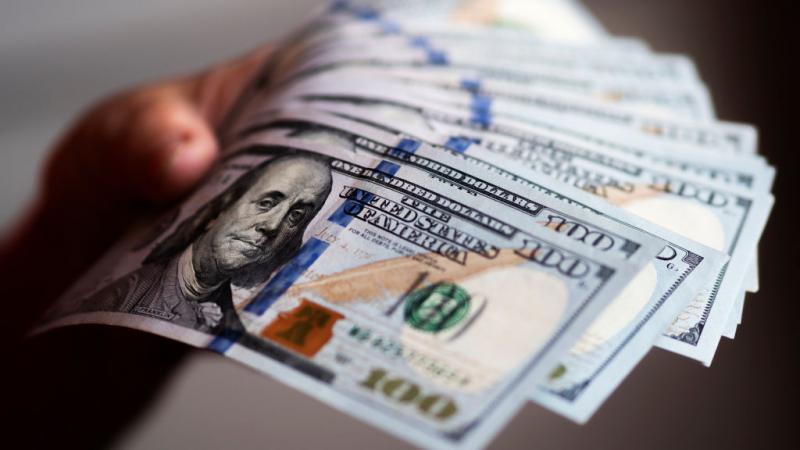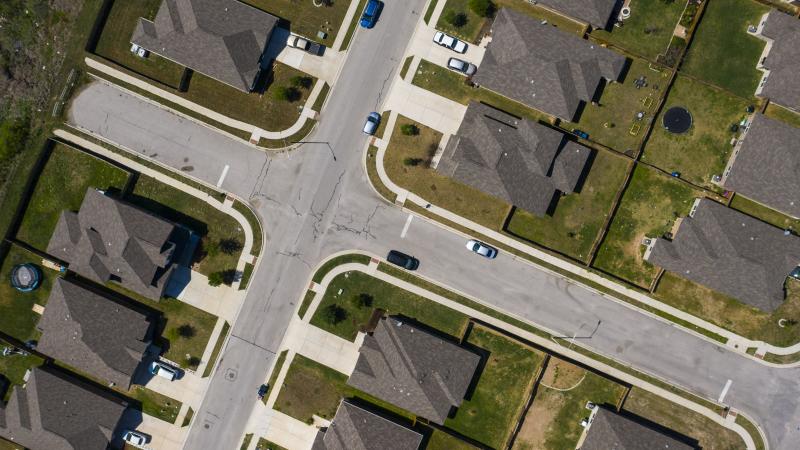Latest inflation figures show that Americans' basic needs eat up more household budgets under Biden
Food prices were unchanged in February but are up 2.2% over last year. Electricity prices have risen 3.6% over last year, and rose 0.3% in February.
The latest inflation figures show that Americans’ key basic needs — food, gasoline and shelter — are leaving their wallets lighter, and efforts to combat the problem aren’t producing the results economists would like.
The federal Consumer Price Index (CPI), which measures the prices that consumers pay for goods and services over time, shows that inflation rose 3.2% over the last 12 months. The CPI for all urban consumers increased 0.4% in February. This is compared to a 0.3% increase in January.
The index for shelter — one of the largest portions of the CPI — which looks at rent, lodging away from home, and household insurance, rose, as did the index for gasoline. Combined, these two indexes were responsible for 60% of the overall inflation increase in February.
Through February, rent costs rose 0.4% and are up 5.7% from last year. Gasoline prices jumped 3.8% in February after dropping 3.3% in January, and they’re down nearly 4% over last year.
Food prices were unchanged in February but are up 2.2% over last year. Electricity prices have risen 3.6% over last year, and they were up 0.3% in February. Energy prices jumped 2.3% in February but are down nearly 2% over last year.
Erased gains
The Bureau of Labor Statistics also released wage data Tuesday, showing hourly earnings for all employees decreased 0.4% from January to February, but over the past year, real average weekly earnings were up 1.1%.
In November, Stephen Miran, adjunct fellow at the Manhattan Institute and former senior advisor for the U.S. Treasury, wrote that inflation-adjusted wages shrunk by 3.7% since the end of 2022, citing the Employment Cost Index.
This drop in wages, Miran wrote, “erased all gains made in the last 2010s.”
President Joe Biden issued a statement Tuesday on the Bureau of Labor Statistics data, drawing attention to inflation being down from its peak in 2022 and at its lowest since May 2012. He also pointed to unemployment remaining low.
“I said in my State of the Union, we have more to do to lower costs and give the middle class a fair shot,” Biden said. He said his proposed budget would lower prescription drug costs, rents, child care and other expenses. He also accused Republicans of having no real plan to lower costs.
“Their only plan is more tax giveaways for big corporations and the wealthy while cutting Social Security, Medicare, and Medicaid. I won’t let them,” the president said.
Policy effects
Writing for the International Monetary Fund this month, John Conchrane with the Hoover Institution, Stanford University, and the Cato Institute explained that inflation is the result of the total demand in an economy exceeding the total supply.
“The source of demand is not hard to find: in response to the pandemic’s dislocations, the US government sent about $5 trillion in checks to people and businesses, $3 trillion of it newly printed money, with no plans for repayment," Conchrane said.
The problem of inflation, Conchrane continued, refutes the mantras of “stimulus” that became popular in the 2010s during the Obama administration, which argued that Americans would prosper if the government released enough borrowed or printed money into the economy.
“You asked for it. We tried it. We got inflation, not boom,” Conchrane wrote.
Others argue that many of the Democrats' policies at the state and federal level have contributed to the growing financial burden Americans are facing in the home.
While wind and solar have promised decreasing energy costs, these projections were based on flawed metrics that don’t include all the costs needed to create a constant electricity supply from weather-dependent energy sources. Despite more wind and solar farms being added to the grid, electricity prices rose nearly 4% over the last year, according to the Bureau of Labor Statistics.
Last year, the Alliance for Consumers produced a report on the cost of the Biden administration’s policies on everyday household expenses.
Efficiency standards, according to the “Biden’s Dream House” study, increased the cost of gas furnaces, water heaters, cards, dishwashers, gas stoves, light bulbs, clothes washers and air conditioners. Altogether, the study estimates that the average home pays $9,100 as a result of the administration's policies.
O.H. Skinner, executive director for the alliance, told Just The News that each of the administration’s regulations add up to drive up costs in the home. “Each one in isolation is just annoying. But when you show the average consumer how much more things in their homes are going to cost, they become very displeased,” Skinner said.
Skinner said, as an example, people will see a new electric vehicle is going to cost more. But when they learn that the costs of tires are higher on an EV, as well as repairs and insurance, the full costs of an EV become harder to swallow.
“We think you’re starting to see the rubber hit the road. People are starting to realize they’re being fooled,” he said.
Economy: "Not so good"
Polls over the past year have shown Americans are consistently rating the economy as a top concern.
The most recent Financial Times monthly survey showed 21% of respondents were having trouble meeting expenses, and another 30% were just barely meeting them. In both cases, the numbers were within a few percentage points of what they were a year or two years ago.
Thirty-nine percent rated the overall economy as “not so good,” and 28% said it was “poor.”
Gallup’s Economic Confidence Index in January showed Americans’ attitudes toward the economy have improved from June 2022, when they sat at -58. In January, they’d risen to -26, but that was still down from 41 in February 2020.
A Suffolk University/USA Today poll in September found that 84% of respondents thought the cost of living was rising. Half of the respondents said food prices were rising the most. Sixteen percent said housing costs were rising fastest, and 11% said utility bills were. For another 11%, transportation, including gas, was the fastest rising part of their budgets.
The Federal Reserve considers a 2% inflation rate to be a comfortable spot, and when it rises above that, as it has done throughout Biden’s time in office, the Fed raises interest rates to try and cool demand.
Jerome Powell, the Fed chair, testified before the House Financial Services Committee last week that the central bank won’t begin lowering interest rates until there is more certainty that inflation has been tamed.
Those rates are likely at their peak, Powell said, and if the economic signals go as expected, the Fed will begin “dialing back policy restraint at some point this year.”
If the latest inflation figures are any indication of what 2024 will bring, interest rates are going to be high for some time.
The Facts Inside Our Reporter's Notebook
Links
- federal Consumer Price Index
- compared to a 0.3% increase in January
- released wage data Tuesday
- wrote that inflation-adjusted wages shrunk by 3.7%
- Employment Cost Index
- President Joe Biden issued a statement
- explained that inflation is the result
- became popular in the 2010s during the Obama administration
- donât include all the costs
- more wind and solar farms were added to the grid
- Alliance for Consumers
- everyday household expenses
- most recent Financial Times monthly survey
- showed Americans
- Suffolk University/USA Today poll
- considers a 2% inflation rate to be a comfortable spot
- raises interest rates to try and cool demand
- House Financial Services Committee
















